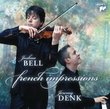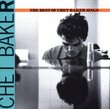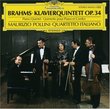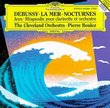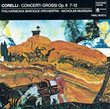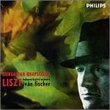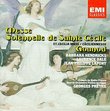| All Artists: Johannes Brahms, Beaux Arts Trio, Menahem Pressler, György Sebök Title: Brahms: Complete Trios Members Wishing: 0 Total Copies: 0 Label: Philips Release Date: 8/10/1993 Genre: Classical Style: Chamber Music Number of Discs: 2 SwapaCD Credits: 2 UPC: 028943836524 |
Search - Johannes Brahms, Beaux Arts Trio, Menahem Pressler :: Brahms: Complete Trios
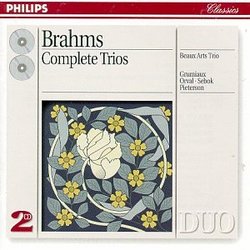 | Johannes Brahms, Beaux Arts Trio, Menahem Pressler Brahms: Complete Trios Genre: Classical
|
Larger Image |
CD DetailsSimilarly Requested CDs |
CD ReviewsA Must--With One Exception Christopher Smith | Atlanta, Georgia | 06/15/2000 (4 out of 5 stars) "Brahms's chamber music has become a growing source of delight for me, and I'm increasingly coming to see it as his greatest achievement. He did everything, from string sextets to clarinet sonatas, and it was with his chamber music that he truly relaxed and let his gift for lyricism roam free. If his symphonic works were driven by the need to come to terms with and transcend Beethoven, then his chamber music has Schubert's expansive generosity. These trios are a great introduction, since they are drawn from every stage of Brahms's career. The Beaux Arts Trio offer definitive proof that it's best to go for an established ensemble rather than the superstar collaborations that record companies dream up to try and up their sales figures. There's an instinctive dialogue going on between these three veterans, and Brahms's two later piano trios are exquisitely done. Their approach is relaxed, with none of the reversion to manic keyboard hammering that seems to characterize many interpretations of Brahms's piano trios/quartets/ quintet. Brahms wrote his chamber pieces for clarinet toward the end of his life, and the Beaux Art Trio's interpretation is appropriately, wistfully autumnal. Like Brams's other clarinet music, this piece is very special, and this is the most appealing interpretation I've heard. As for the horn trio, which isn't done by the Beaux Arts Trio, but features an ensemble led by Arthur Grumiaux, they just don't play music this way anymore.My only reservation has to do with the fact that there are two versions of the Op. 8 Piano: the original, and the revised version which Brahms completed in 1889. Brahms cut great chunks out of the first and second movements in the revised version, which I feel was a shame. The Beaux Arts Trio choose the revised version, and they do a fine job, but I miss the "heavenly length" of the original, where Brahms's youthful vigor is on full display. If you want the original op. 8, go for the (unfortunately quite expensive) Borodin Trio set, but I'd still buy this Beaux Arts release, simply because everything else is done so superbly." Highly recommended mrovich | London, UK | 05/06/2000 (5 out of 5 stars) "Some of Brahms' best work was in chamber music, and trios like no.3 represent some of the best music for piano, violin and 'cello. The treat here is to have some rarer pieces for horn and clarinet trios. Even the "immature" first trio opens beautifully, and there really is two-CD's worth of material here to offer many rewarding listens.The Beaux Arts recording is superior to that on offer from EMI, played by the great Ashkenazy, Harrell and Perlman, but lacking the cohesion of these experienced and practically conjoined musicians. Also, it does not have the "bonus" trios.A great introduction to Brahms, and practically essential for any fans of the grand old German." Becoming a favorite John Landkamer | Bothell, WA USA | 10/17/2000 (4 out of 5 stars) "After listening to the first movement of the C major I'd agree that it's a shade brisk and perfunctory. I've now listened to this performance of the clarinet trio many times. This is a piece that made no impression on me until I listened repeatedly and studied the score. I now realize that, while it's not a perfectly satisfying masterpiece, it has a subdued, elusive beauty, plus it's a remarkably concise piece. I have a theory that it was written in memory of Schumann. Some reasons: 1) the key of A minor was a favorite of Schumann's, 2) the opening melody for cello resembles the opening theme of Schumann's cello concerto (also in A minor), 3) the climax of the coda of the first movement (bars 194-200) has several Schumannesque descending fifths in the melody, 4) the whole piece has a feeling of sad reminiscence such as one can imagine Brahms would feel late in his own life thinking back on his friend, now dead thirty years. The clarinet trio is played very beautifully with no hint of the perfunctory quality mentioned above in connection with the C major trio. This is great music that deserves to be studied and thought about, not just played in the background.Addendum (10/2002)...I just want to take back what I said about the C major being perfunctory. I've had many hours of enjoyment from all tracks on these discs, particularly the C major and C minor piano trios and the clarinet trio. That business about "perfunctory" was a very superficial initial reaction. These guys play with fire and sweep...crack open a beer and crank it up!"
|

 Track Listings (8) - Disc #1
Track Listings (8) - Disc #1
